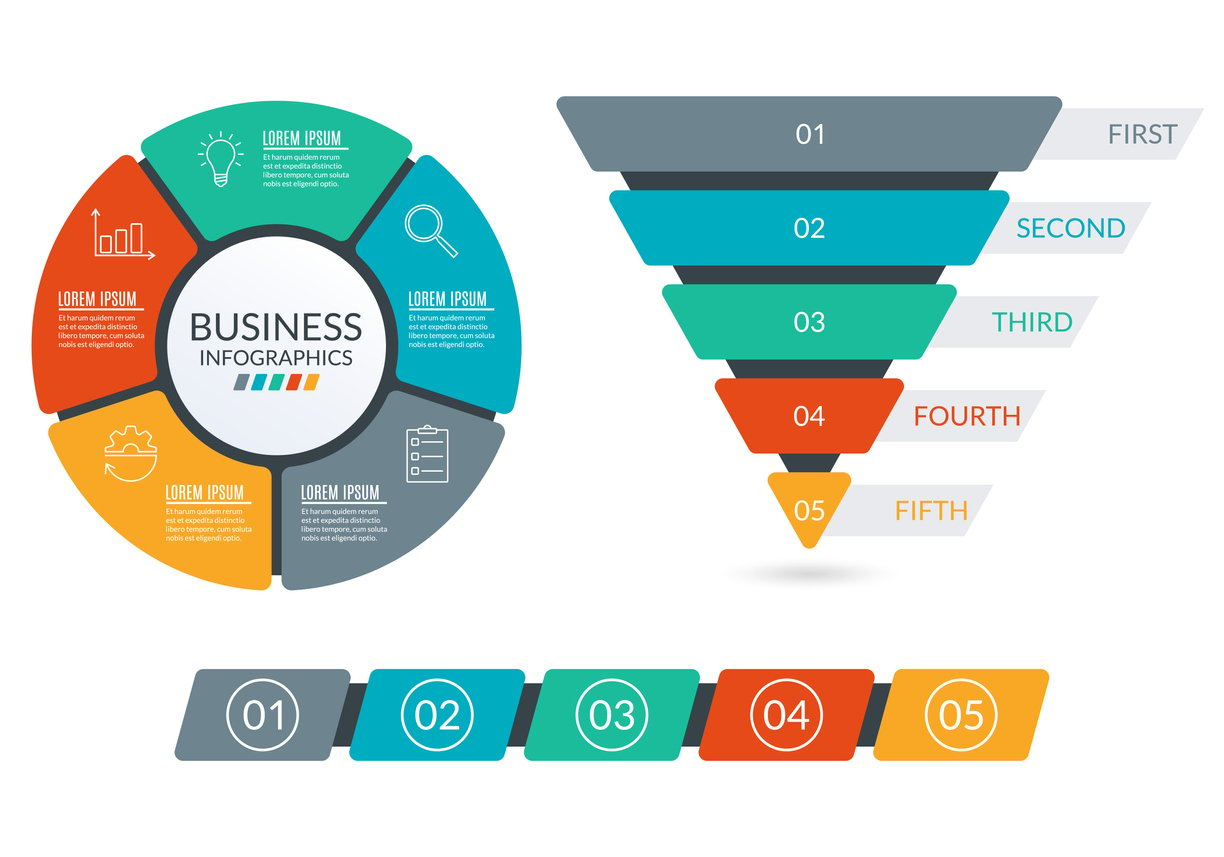
How to Create a Killer Prospect Management Strategy
 Updated on
Updated on
By Ringy
Table of Contents
Table of Contents
Picture this: you, adorned in prospect-proof armor, armed with software mightier than Excalibur, and a battle cry that strikes fear into the hearts of unqualified leads.
Managing prospects is a bit like herding cats; only these cats have LinkedIn profiles and decision-making powers.
It's the art and science of strategically organizing, nurturing, and guiding potential leads through a journey, from initial contact to the crescendo of conversion.
By the end of this journey, you'll be a prospect-whisperer, a lead-tamer, a marketing maestro, leaving your competitors wondering if you've enlisted the help of a magician in your CRM.
This article explores the stages of effective prospect management systems, tips for finding new sales prospects, and how to manage prospects with your customer relationship management software.
Stages of Effective Prospect Management

Handling prospects doesn't have to be a fumble like back in the day. With prospect and lead management software like Ringy, dealing with customers, prospects, and sales has become a breeze.
Nevertheless, if you aren't aware of the different stages of effective sales prospect management, you'll be left in the dust when it comes to keeping things in a straight line.
Define Your Ideal Customer
Crafting the Ideal Customer Profile (ICP) is akin to sculpting a detailed map that outlines the characteristics defining customers poised to extract maximum value from your product.
Without a well-defined ICP, your sales team risks venturing on a wild goose chase, expending valuable time chasing prospects that may not align with your offering.
Closing deals with the "wrong" customers not only presents immediate challenges but could also lead to eventual disengagement, even post-closure.
To determine your ICP, take time to figure out this information:
- Company Size: Determine the scale of businesses that align with your product, ensuring a tailored approach that suits their operational needs.
- Industry: Delve into specific sectors that benefit most from your product, refining your outreach strategy for maximum impact.
- Annual Revenue: Tailor your approach based on the financial capacity of potential clients, ensuring a match between their budget and your product's value.
- Decision-making Process: Understand how decisions are made within a prospect's organization, streamlining your sales pitch for maximum effectiveness.
- Ideal Contact, Title, and Department: Pinpointing the key decision-makers by title and department enhances the precision of your outreach, increasing the likelihood of meaningful engagement.
As this dynamic entity adapts to customer insights and adjustments are made, the clarity achieved leads to more targeted and successful prospecting efforts.
Reach Out With an Email Campaign
The outreach arsenal is vast, including tactics like cold calls, social selling, trade shows, and industry events, with cold emails emerging as one of the most prevalent strategies due to their perceived less intrusive nature and resource efficiency. Outreach involves being concise while delivering value and a compelling call to action.
Utilizing a combination of cold calls and emails can interdependently enhance the likelihood of establishing connections with prospects.
Now, let's delve into the nuances of creating a compelling cold email campaign:
- Conciseness and Clarity: Craft emails that are both concise and crystal clear, clearly articulating the value you bring and a compelling CTA.
- Follow-up Strategy: Sending follow-up emails is not just a courtesy; it significantly boosts reply rates. A recommended 3-4 follow-up sequence ensures persistent engagement.
- Subject Line Appeal: If prospects aren't opening your emails, consider tweaking your subject lines. An appealing subject line is the gateway to capturing their attention.
- Content Evaluation: If emails are opened but met with silence, scrutinize the content. Content-related issues may be hindering meaningful responses from prospects.
Industry benchmarks, such as a 60% Open Rate and a 10% Reply Rate, provide valuable metrics. However, it's crucial to note that these benchmarks may vary based on customer types or products.
Qualify Your Prospects
If your outreach successfully sparks interest and prospects express a desire to delve deeper into your offerings, it marks the opportune moment to embark on the qualification phase.
Qualifying leads are the compass that guides your sales ship, steering it towards prospects who not only fit the ICP but also possess the potential to become valuable customers.
For structure and direction in this process, we recommend trying out the BANT framework:
- Budget: How much is the customer willing or able to spend?
- Authority: Who is the decision-maker of the transaction?
- Need: Do they have a genuine need for our product/service?
- Timeline: How much time will the customer lead need to make a final purchasing decision?
In the event of disqualification, your sales team is empowered to redirect their focus efficiently. Qualification serves as the lighthouse, guiding your team toward prospects with the most significant potential for conversion.
Tips for Finding New Sales Prospects

With the myriad of platforms where prospects hang out, there is one that stands out like a sore thumb.
Yes, you guessed right, LinkedIn!
Now, we're not saying use LinkedIn exclusively. If your business audience is on a different network, that's where you should be hunting for sales. Either way, we've compiled the top three tips to help you find new sales prospects and ultimately, convert them into paying customers.
Follow the Prospect Before You Connect
To engage with potential connections on LinkedIn, it's essential to establish a rapport before reaching out unless you're utilizing InMail as part of a sponsored message.
Begin by connecting with your prospects; this can be achieved by following them.
As you connect, actively participate in their LinkedIn activities by commenting on, liking, and sharing their status updates. By gradually becoming a visible and supportive presence in their professional sphere, you increase the likelihood that they perceive the value you bring.
Building a genuine online relationship through meaningful interactions fosters trust and enhances the potential for fruitful professional connections.
Search Social Media Groups
Accelerating your path to connection with a prospect can be achieved by strategically becoming part of groups where they actively engage.
Let's look at some actionable steps to get closer to contact with your prospect.
|
Action Steps |
Example of Engagement |
|
Explore prospect's profile for affiliated groups |
Observe groups listed on their profile |
|
Identify relevant groups for potential connection |
Choose groups aligned with professional interests |
|
Join selected groups |
Become a member of the chosen groups |
|
Participate actively in group discussions |
Contribute insightful comments and engage in group conversations |
Once you're a member, actively participate by contributing to the discussions and posts within the group. Even if direct responses are not feasible, many group members receive email alerts highlighting noteworthy comments.
Seizing this opportunity can propel your insights or contributions directly into your prospect's inbox.
Give Them Engagement
Achieving a viral post is a universal aspiration. To enhance your connection-building strategy, closely monitor your prospect's online activity and actively contribute to amplifying engagement. This demonstrates your genuine interest in their ideas and positions you as an involved and supportive professional within their network.
Additionally, delve into the details highlighted on their profile, such as courses, presentations, and thought leadership. Take the initiative to endorse them for the skills that hold the utmost significance to them, showcasing your acknowledgment of their expertise.
Proactively engaging with both their content and professional achievements, you not only foster a more profound connection but also establish yourself as a valuable and wise member of their professional sphere.
Prospect Management Software: How to Manage Prospects With a CRM

If you haven't already figured it out, an effective prospect management system is the cornerstone of success. To augment this critical aspect, organizations often turn to CRM sales software to manage these endeavors.
In this section, we will delve into the convolutions of prospect management using CRM, exploring each step in detail to equip businesses with the knowledge to identify, engage, and convert leads effectively.
Identify New Leads from Multiple Sources
Effectively managing prospects begins with a crucial initial step-identifying and capturing leads from various sources.
In this process, the role of CRM software is pivotal. By providing specialized tools, b2b CRM solutions allow businesses to streamline lead management and enhance their overall prospecting strategy.
To better understand the multifaceted tools that CRMs offer for lead identification and capture, let's delve into a detailed breakdown:
|
CRM Tool |
Functionality |
|
Consolidate Lead Sources |
Aggregate leads from diverse channels like website forms, social media, and email campaigns. |
|
Automated Lead Capture |
Implement real-time automated processes to minimize manual data entry and maximize operational efficiency. |
|
Lead Segmentation |
Utilize CRM capabilities to categorize leads based on specific criteria, enabling targeted communication and personalized engagement. |
Adopting CRM tools for lead management is not just a practice in efficiency but a strategic investment in building lasting customer relationships.
Assign Qualified Leads to Sales Reps
Once potential leads have been identified, the subsequent step involves the meticulous assignment of these leads to the most appropriate sales representatives. CRM software is central to this process, offering comprehensive tools to streamline and optimize lead assignments. This strategic allocation ensures that sales representatives focus on leads with the highest potential for conversion.
Businesses can objectively evaluate and prioritize the sales pipeline based on predetermined criteria by implementing a nuanced lead-scoring system within the CRM.
A key aspect of efficient lead assignment lies in the automation capabilities of CRM software. Companies can leverage CRM automation to establish rules for lead assignment, surpassing manual intervention.
Factors like geography, industry, or specific product interests are taken into account, enabling the creation of intelligent algorithms for automated lead distribution. This ensures a seamless and efficient allocation of leads among sales teams and increases the likelihood of matching a prospect with a representative possessing the most relevant expertise and insight.
Furthermore, integrating CRM with various communication channels, including email and messaging platforms, is instrumental in fostering prompt and informed responses from sales representatives. It facilitates a unified and synchronized approach to communication, allowing representatives to stay informed about lead interactions.
Plan and Track Lead Engagement

CRM software provides a comprehensive toolkit for planning and tracking lead engagement. Through meticulous activity tracking, the CRM tools allow for the monitoring and recording of every interaction with leads, including various touch points such as emails, phone calls, meetings, and other forms of engagement.
The result is a detailed and holistic view of lead engagement history, enabling sales teams to personalize their approaches based on a thorough understanding of past interactions.
Moreover, the strategic incorporation of task automation within CRM is instrumental in ensuring a proactive and organized approach to lead engagement. Enterprises can schedule follow-ups, set reminders, and orchestrate a systematic workflow by implementing automated task management processes.
Furthermore, CRM software facilitates a profound understanding of the customer journey through advanced analytics. By leveraging CRM analytics, businesses can map the customer journey, identifying key touch points contributing to the overall experience.
Understanding the customer journey empowers you to align your approaches to customer preferences, making interactions more personalized, impactful, and conducive to building lasting relationships.
Plan the Right Ask at the Right Time
In your quest to convert leads into customers, understanding the significance of timing is paramount.
With CRM, you can harness the predictive analytics features, allowing you to foresee the optimal moments for presenting specific offers or pitches to your leads.
The CRM's capacity for behavioral analysis provides you with valuable insights. Delving into lead behavior patterns recorded in the CRM, you can tailor your approach based on their preferences.
Likewise, through behavioral analysis, you gain a deeper understanding of what appeals to your audience, enhancing the effectiveness of your engagement.
In this era, communication automation becomes a key asset in your arsenal. With CRM, you can implement automated communication workflows that deliver targeted messages at strategic points in the lead's journey. This means you can set up automatic responses or outreach initiatives that are not only timely but also precisely aligned with the lead's progress.
Track Performance and Adjust Your Strategy
Lastly, you have the performance analytics tool at your disposal. You can meticulously measure the effectiveness of different prospect management tools, strategies, channels, and campaigns through CRM analytics. This capability allows you to identify high-performing tactics that yield positive results and pinpoint areas for improvement.
With the insights derived from performance analytics, you can make informed decisions to enhance the efficiency and impact of your prospect management initiatives.
Also, the CRM's provision of real-time reporting is instrumental in your journey towards continuous improvement. Within the CRM, you can access immediate reports and dashboards, gaining insights into the real-time performance of sales teams, lead conversion rates, and overall prospect management metrics.
Furthermore, the iterative refinement of your prospect management strategy becomes a tangible reality with CRM software. Leveraging data-driven insights from CRM software, you can iteratively refine and optimize your prospect management strategy.
Final Thoughts - Prospect Management
Now that you've got the gist of prospect management, it's only fitting that we introduce our software to you.
Ringy, an all-in-one solution to handle everything customer and sales-related, is here to help you boost your team's productivity. We designed Ringy to be an intuitive, user-friendly platform with short implementation times and easy onboarding.
What's more, you ask?
Ringy has multiple integrations with business tools you already use, which means amalgamating with your tech stack will be easier than saying, "Deal closed." With Ringy, you'll be on top of all customer interactions and be able to track them easily.
Don't forget about our DRIP campaign, local ID, and AI features that can propel your business into the stratosphere.
Request a demo today to find out more.

Skyrocket your sales with the CRM that does it all.
Calling? Check. SMS? Check. Automation and AI? Check. Effortlessly keep in touch with your customers and boost your revenue without limits.

Take your sales to new heights with Ringy.
Sales in a slump? Ringy gives you the tools and flexibility you need to capture leads, engage with them, and turn them into customers.
Subscribe to Our Blog
Enter your email to get the latest updates sent straight to your inbox!
Categories
Related Articles


























































































